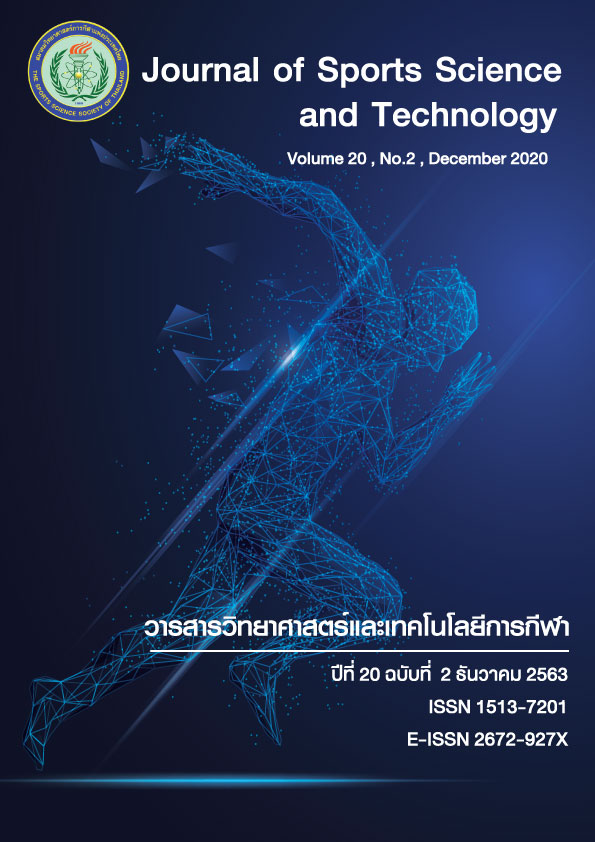THE RELATIONSHIP BETWEEN ANTHROPOMETRIC VARIABLES AND INJURY OF THAI NATIONAL ARTISTIC GYMNASTICS AND RHYTHMIC GYMNASTICS
Keywords:
Injury, Gymnast, AnthropometryAbstract
Introduction: The many disciplines of Gymnastics involves complex movement and combines various movement patterns both during practice and competition that could lead to an injury. Body proportion is also one aspect that may lead to injuries. However, there was no report relationship to anthropometry and injury in Thai elite gymnasts. Therefore, this study examined the relationship between body proportion and the injury of each body part in Thai national gymnasts. Method: Nine artistic gymnasts and four rhythmic gymnasts volunteered and participated in this study. Anthropometric measurements of each gymnast have been collected as well as the participants injury history. This data was recorded by physiotherapists working for the Thai gymnastic national team for investigating the relationship between anthropometric and injuries. Results: Anthropometry (weight, BMI, waist) and percentage body fat of gymnasts showed positive relationship to an injury in some body areas such as scapular injury (p = 0.012) shoulder injury (p = 0.035), wrist injury (p = 0.042), knee injury (p = 0.029) and ankle injury (p = 0.022). Furthermore, the lower extremity difference presented a positive relationship to knee injuries (p = 0.045). Conclusion: There was a significant relationship between gymnastic anthropometry and injuries found. Moreover, the results of this study showed that an injury area may be influenced from the characteristic movements of each gymnastic type. For practical implementation, this study may be useful for coaches, athletes, and their teams to plan a practice program as well as prepare an athlete’s body to avoid an injury that may occure.






